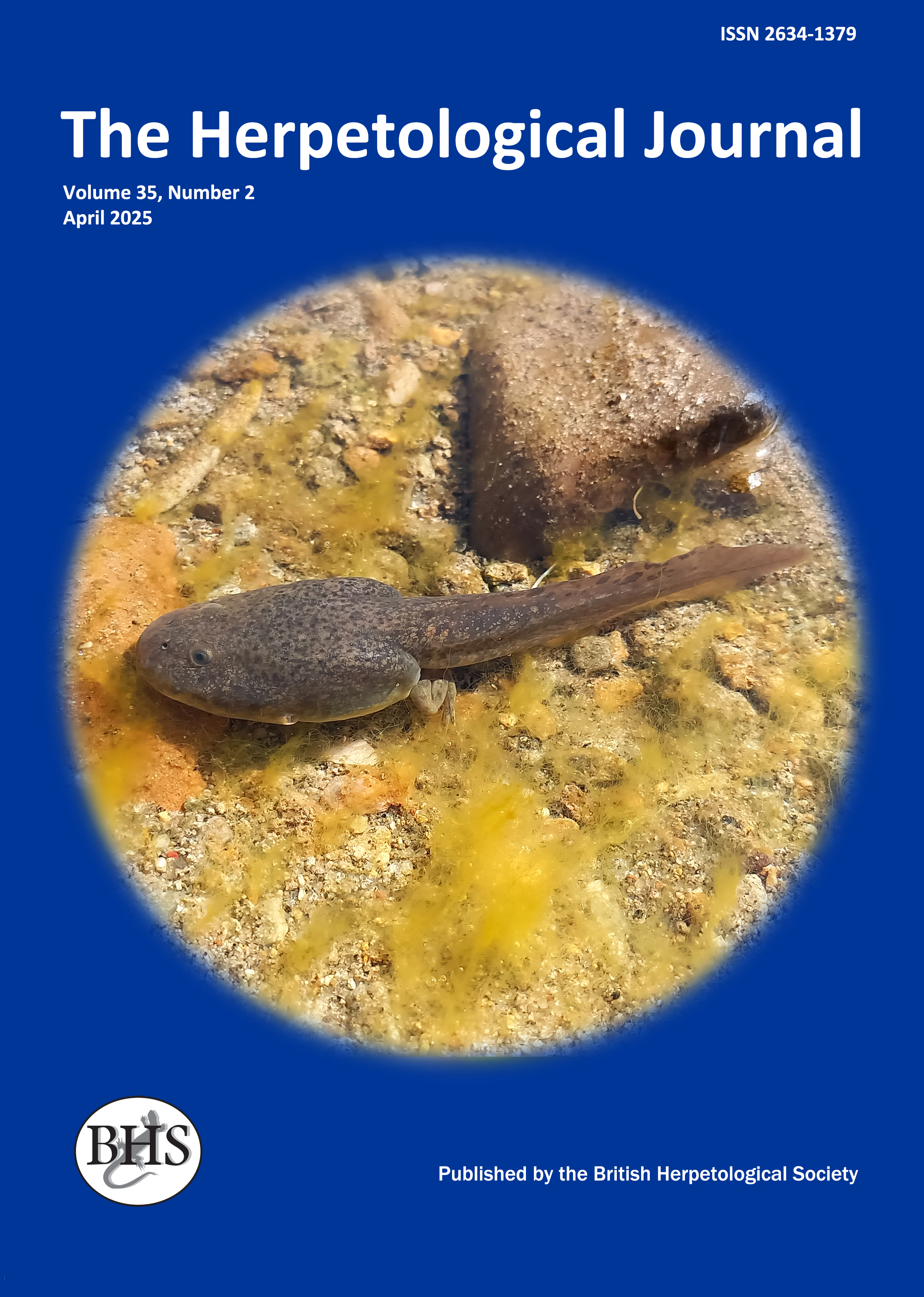
The Herpetological Journal
The Herpetological Journal is the Society's prestigious quarterly scientific journal. Articles are listed in Biological Abstracts, Current Awareness in Biological Sciences,Current Contents, Science Citation Index, and Zoological Record.
ISSN 0268-0130
2021 Impact Factor from Clarivate for the Herpetological Journal is 1.194, an increase of 0.332 from 2020.
pdf 01. Close encounters of the worst kind: patterns of injury in a population of grass snakes (Natrix natrix)
2876 downloads
Open Access
pp. 213-219
Authors: Gregory, Patrick T. & Isaac, Leigh Anne
Abstract: Injuries of various types are widespread in animals and presumably have implications at the population level (e.g. reduced future survivorship). We studied patterns of injury acquisition in a population of grass snakes (Natrix natrix) in south-eastern England. Injuries suffered by grass snakes were of various types, including broken bones, assorted scars and wounds, and tail loss. What causes such injuries is unknown, but predators seem most likely. We predicted that the probability of having an injury would be higher for larger snakes, for several reasons (e.g. larger snakes are older and thus have had more opportunity to be injured). We also predicted that injury rates would be higher in females because, when gravid, they are expected to bask in the open more than other snakes. Our data strongly supported the first of these predictions, but not the second. Males had significantly higher injury rates than females of the same body size. However, because males grow more slowly and mature at a smaller body size than females, higher injury rates of males might simply reflect their smaller size at a given age. Even if age plays a role in influencing acquisition of injuries, other, more directly size-related factors also might be important. Two possibilities are that small snakes might be less likely to survive an injury or that small snakes spend more time hidden and so are less likely to encounter large predators. We lack data on the first of these, but data on sizes of snakes found under cover versus those found in the open are consistent with the second. Studies of injury rates in snakes need to move beyond the descriptive stage and begin to test the broader consequences of injuries.
Keywords: SOUTHERN ENGLAND, COLUBRIDAE, NATRICINE, PREDATION, SNAKE, INJURIES

